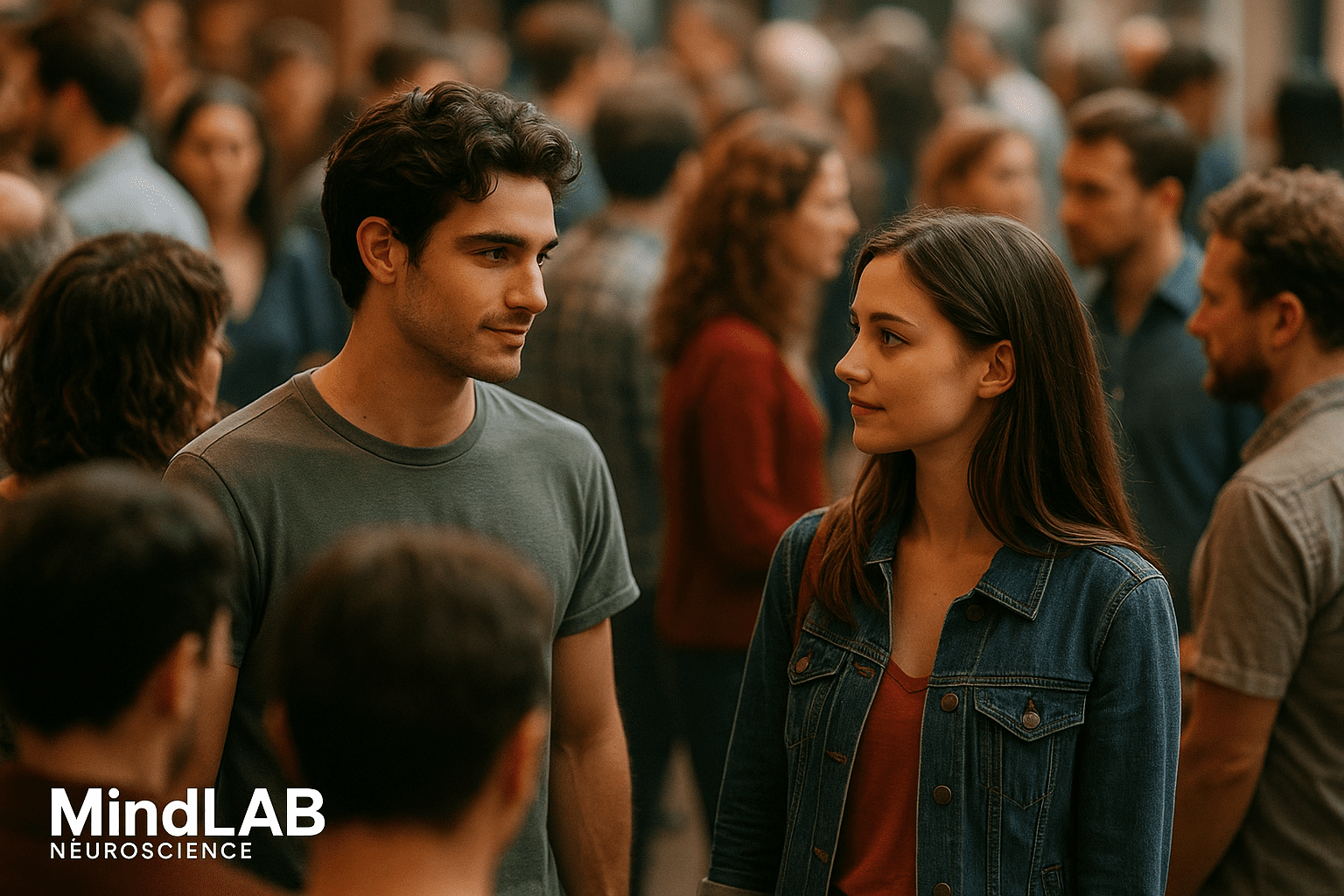Have you ever locked eyes with someone across a crowded room and felt an undeniable magnetic pull? Or perhaps you have experienced the opposite—meeting someone objectively attractive yet feeling absolutely nothing? These puzzling moments are not random accidents of fate. They are the result of sophisticated neural circuitry operating beneath your conscious awareness, making rapid-fire calculations about genetic compatibility, reproductive fitness, and long-term partnership potential in mere fractions of a second.
The neuroscience of sexual attraction reveals that your brain functions as an extraordinarily complex matchmaking algorithm, weighing countless biological and psychological factors before you even realize you are interested. While poets have romanticized chemistry and sparks for millennia, modern brain science has begun to decode the precise mechanisms underlying these powerful feelings. Understanding these processes empowers you to make more conscious relationship choices, while appreciating the remarkable biological symphony that orchestrates your romantic life.
Your Brain’s Lightning-Fast Compatibility Calculator
When you encounter a potential romantic partner, your dorsomedial prefrontal cortex springs into action with astonishing speed. Research demonstrates that this region of your brain, positioned just above your eyes near the front of your skull, evaluates romantic prospects in as little as one-tenth of a second—faster than the time required to complete a single conscious thought. This neural rapid response system explains why first impressions in romantic contexts feel so immediate and visceral.
The dorsomedial prefrontal cortex does not work alone in these split-second assessments. It operates as part of a broader social cognition network that integrates information from multiple brain regions simultaneously. One subdivision scans for universally attractive traits, such as facial symmetry and health indicators, while another zone focuses on personalized preferences shaped by your unique experiences, attachment history, and psychological needs. This dual-processing system explains why attraction combines both objective standards and highly subjective individual tastes.
Studies using functional brain imaging during speed-dating scenarios have revealed something remarkable: the patterns of activity in your prefrontal cortex during those first brief encounters accurately predict whether you will pursue further contact with someone days or weeks later. Your brain essentially determines whether chemistry exists before your conscious mind has fully evaluated the situation. This unconscious processing demonstrates that the neuroscience of sexual attraction operates largely outside your awareness, guiding romantic decisions through pathways far older than rational thought.
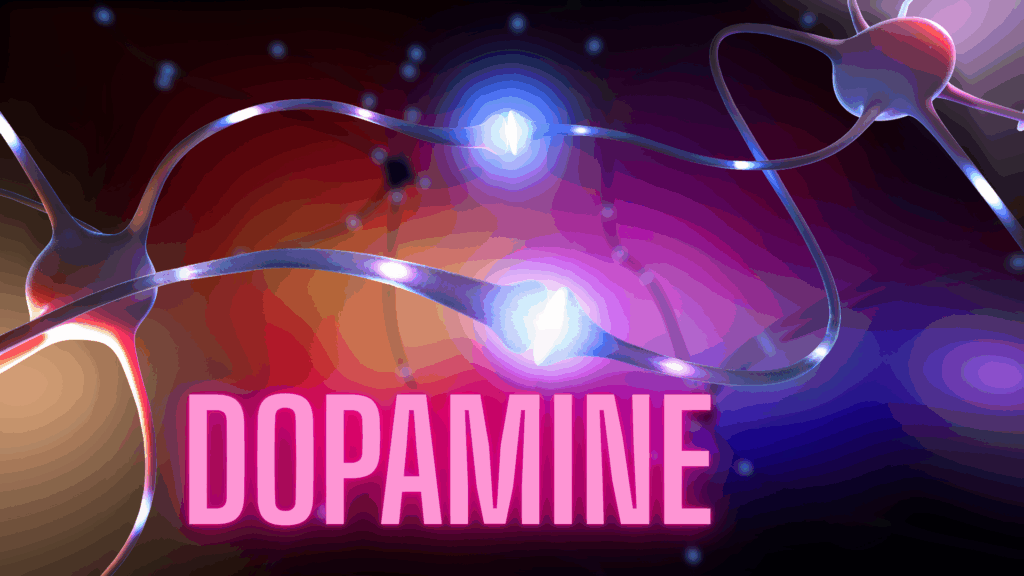
The Dopamine Rush Behind Romantic Obsession
Once attraction sparks, a flood of neurochemicals transforms your mental state in dramatic ways. The ventral tegmental area, a small structure near the base of your brain, becomes remarkably active when you view photos of someone who captivates you. This region manufactures dopamine, the neurotransmitter responsible for motivation, reward-seeking behavior, and that euphoric feeling people describe as being head-over-heels.
The ventral tegmental area projects dopamine to several interconnected brain regions, most notably the nucleus accumbens and the caudate nucleus. These areas form your brain’s reward circuitry—the same neural network that activates in response to chocolate, winning money, or even cocaine use. Brain imaging studies have shown that romantic attraction stimulates these dopamine-rich regions with intensity comparable to powerful addictive substances, which explains why early-stage love can feel genuinely intoxicating and all-consuming.
Dopamine serves multiple critical functions in sexual attraction. Beyond creating pleasurable sensations, it sharpens your focus and attention specifically toward the object of your desire. You may find yourself obsessively thinking about this person, noticing details about them that others might overlook, and feeling energized by even brief interactions. Dopamine also drives goal-directed behavior, motivating you to pursue connection, arrange meetings, and invest effort into relationship development. This neurochemical cocktail essentially hijacks your brain’s motivational systems, making romantic pursuit feel like the most important objective imaginable.
The dopamine-fueled attraction phase typically peaks during the first six months of a romantic relationship before gradually declining. This neurochemical timeline aligns with what many couples describe as the honeymoon period—those early months when your partner seems perfect and every moment together feels electric. Understanding this biological arc helps contextualize the shifts that inevitably occur as relationships mature and different neurochemical systems take precedence.
When Brain Waves Synchronize Between Partners
Perhaps one of the most fascinating discoveries in relationship neuroscience and in the neuroscience of sexual attraction involves behavioral and neural synchrony between romantic partners. When two people experience mutual attraction, their brains exhibit remarkably similar activation patterns, particularly in regions crucial for emotional processing and social cognition. This neural mirroring creates the ineffable sense of connection that people describe as being “in sync” or “on the same wavelength” with someone special.
Mirror neurons play a crucial role in this process of synchronization. These specialized brain cells fire both when you perform an action and when you observe someone else performing that same action. In romantic contexts, mirror neurons help you intuitively understand your partner’s intentions, emotions, and even physical sensations. When you watch your romantic partner smile, reach for you, or express discomfort, your mirror neuron system activates as if you were experiencing those states yourself. This automatic simulation creates immediate empathy and emotional resonance between partners.
Research examining couples during early interactions has revealed that physiological synchrony—coordinated heart rates, breathing patterns, and skin conductance responses—predicts romantic attraction more reliably than physical appearance alone. Partners who naturally fall into synchronized rhythms of movement, speech patterns, and even brain oscillations report stronger chemistry and are more likely to pursue continued contact. The neuroscience thus extends beyond individual brain function to encompass the dynamic interplay between two nervous systems, finding complementary patterns.
This synchronization appears to operate largely outside conscious control. You cannot deliberately force your brain waves to match someone else’s, which may explain why chemistry feels either present or absent rather than something you can manufacture through effort. When behavioral and neural synchrony occurs naturally, it facilitates trust-building, emotional bonding, and the sense that you have discovered someone uniquely suited to you. The brain essentially recognizes compatible operating systems and responds with intensified attraction.

The Scent of Genetic Compatibility
While visual cues dominate conscious awareness during attraction, your olfactory system quietly processes crucial genetic information that has a powerful influence on romantic interest. The major histocompatibility complex represents a group of genes critical for immune system function, and research has consistently demonstrated that humans are attracted to the natural scent of individuals with dissimilar MHC genes from their own.
This preference for genetic diversity serves an important evolutionary function. When two parents possess different MHC profiles, their offspring inherit a broader repertoire of immune system variants, providing enhanced protection against diverse pathogens and improved overall health. Your brain has evolved mechanisms to detect these genetic differences through chemosensory pathways, essentially steering you toward partners who will produce the healthiest possible children—even if you have no conscious intention of reproducing.
Studies examining scent preferences have found that women consistently rate the body odor of men with MHC-dissimilar genes as more pleasant and sexually attractive compared to men with MHC-similar genes. Remarkably, this preference operates completely unconsciously—participants cannot articulate why they find certain scents appealing, and many express surprise that scent influences attraction at all. The science of sexual attraction reveals that your olfactory system communicates directly with brain regions responsible for mate selection, bypassing the need for conscious processing or rational evaluation.
Interestingly, hormonal contraceptives appear to disrupt this natural preference pattern. Women taking oral contraceptives show reduced or even reversed MHC preferences, potentially because contraceptive hormones create pregnancy-like hormonal states that shift mating psychology toward familiarity and family-bonding rather than genetic diversity-seeking. This finding has sparked discussions about whether contraceptive use during early relationship formation might influence long-term compatibility and relationship satisfaction after women discontinue hormonal birth control.
Evolutionary Wisdom Encoded in Facial Preferences
Your brain responds to specific facial characteristics that signal genetic quality and reproductive fitness, though you may never consciously recognize why certain faces captivate you while others do not. Facial symmetry emerges as one of the most robust predictors of perceived attractiveness across cultures and throughout human history. Symmetrical faces indicate developmental stability—the ability to maintain consistent growth patterns despite genetic and environmental challenges during development.
Computer-based studies that systematically manipulate facial symmetry have confirmed that increasing symmetry alone significantly enhances perceived attractiveness. This preference appears to be hardwired rather than learned, as even infants gaze longer at symmetrical faces compared to asymmetrical alternatives. The biological logic underlying symmetry preferences suggests that asymmetry may reveal developmental disruptions caused by genetic mutations, parasite load, poor nutrition, or other factors that could compromise offspring viability.
Beyond symmetry, your brain also evaluates facial averageness—how closely someone’s features conform to population norms. Research has shown that composite faces created by averaging multiple individuals’ features are typically rated as more attractive than most of the original faces. This seemingly paradoxical preference for average features may reflect benefits associated with genetic diversity and heterozygosity, as extreme or unusual features can indicate homozygosity for potentially harmful recessive alleles.
The neuroscience of sexual attraction also encompasses sexually dimorphic facial features that signal sex hormones and reproductive capacity. In women, features like fuller lips, larger eyes, and smaller jaw structures correlate with estrogen levels and youth—characteristics that historically indicated fertility and childbearing potential. In men, broader jaws, prominent brows, and facial masculinity signal testosterone, which ancestrally correlated with physical strength, dominance, and the ability to acquire resources. While modern contexts have dramatically shifted the relevance of these traits for actual relationship success, your ancient brain circuitry still responds strongly to these evolutionary cues.

When Sexual Attraction Becomes Intoxication: The Addiction Biology Behind Irresistible Chemistry
Most people never recognize that the intoxicating rush they experience during early attraction is literally a chemical addiction hijacking their dopamine reward pathways. This reveals that your brain responds to a new romantic interest with the same neural activation patterns seen in cocaine addiction. When you encounter someone who triggers intense chemistry, your ventral tegmental area floods with dopamine, and your nucleus accumbens lights up like a reward circuit on overdrive. This is not poetic exaggeration—the science of sexual attraction demonstrates that your brain treats romantic obsession with the same neurological intensity as substance abuse.
Research comparing fMRI scans of people in love with scans of people using cocaine shows nearly identical activation in reward centers and motivation circuits. The neuroscience of sexual attraction explains that this dopamine-driven obsession evolved to ensure our ancestors prioritized finding mates above all else—including basic survival, rational judgment, and personal safety.
When powerful chemistry is present, your prefrontal cortex essentially goes offline while your limbic reward system takes the controls. You find yourself thinking about this person compulsively, unable to focus on work or other relationships, experiencing racing heart rates and sleepless nights. You cannot turn off the obsession through willpower alone because the science of sexual attraction has literally rewired your reward expectations.This also explains why people stay in relationships long after they should leave. If initial chemistry was intense, your brain has been conditioned to associate this specific person with your most potent dopamine highs.
The science of sexual attraction proves that intermittent reinforcement—where sometimes they are loving and sometimes they are cruel—actually strengthens addiction more than consistent positive treatment. Like casino gambling, the unpredictability amplifies dopamine release, creating trauma bonds that feel impossible to break. Your brain becomes an addict seeking that next dopamine hit, and the person providing it becomes your drug of choice. Understanding that the neuroscience of sexual attraction operates through addiction mechanisms rather than true love compatibility can help you recognize when chemistry is actually a red flag signaling danger rather than destiny.
The Dark Side: Why Toxic Attraction Is More Powerful Than Healthy Connection
This provocative truth challenges everything popular culture teaches about love: the neuroscience of sexual attraction often creates stronger bonds with toxic partners than with genuinely compatible ones. When a relationship involves emotional unpredictability, intermittent validation, and cyclic patterns of rejection followed by intense attention, the neuroscience of sexual attraction becomes trapped in what researchers call trauma bonding. Your brain literally cannot distinguish between passion generated by genuine connection and panic generated by fear of abandonment. Both states flood your system with cortisol and adrenaline, which intensifies dopamine release when relief finally arrives.
Consider the common scenario where someone feels most attracted to a partner right after an argument. This is not romantic reconciliation—it is the neuroscience of sexual attraction exploiting the stress recovery system. During conflict, cortisol spikes and you experience genuine physiological distress. When your partner reconciles with attention and affection, your body floods with dopamine and oxytocin as stress hormones plummet. This relief-driven dopamine spike is significantly more intense than the dopamine produced during calm, consistent relationship satisfaction. The neuroscience of sexual attraction has essentially taught your brain that this person is your addiction antidote.
People often describe this pattern as feeling “addicted” to their toxic partner, and neuroscience validates this perception completely. Brain imaging shows that people in toxic relationships have dopamine dysregulation nearly identical to people with substance use disorders. The science of sexual attraction reveals that your brain’s reward system has been hijacked by intermittent reinforcement scheduling—the same operant conditioning technique used to make slot machines addictive.
Researchers have found that women in violent relationships show brain patterns indicating they are literally addicted to their abusers. This explains why leaving toxic relationships is neurologically harder than overcoming many drug addictions. The neuroscience of sexual attraction demonstrates that healthy, stable partnership produces moderate dopamine levels that never compete with the intense neurochemical storms created by chaotic, dangerous relationships.
Understanding this dark reality helps explain why intelligence, success, and self-awareness offer virtually no protection against toxic attraction—the science of sexual attraction operates through pathways that bypass conscious decision-making entirely.
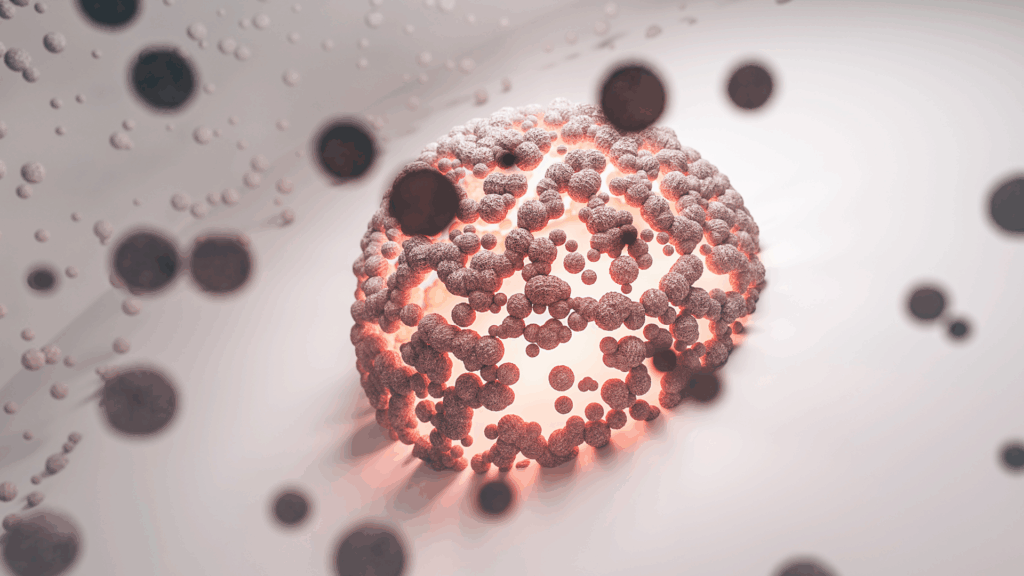
When Oxytocin Transforms Attraction Into Attachment
While dopamine dominates the initial attraction phase, oxytocin emerges as the key neurochemical in the development of deeper emotional bonding and long-term attachment. Often referred to as the bonding hormone, oxytocin is released during physical touch, intimate conversations, prolonged eye contact, sexual activity, and other behaviors that promote emotional closeness between partners.
Oxytocin works synergistically with dopamine systems to transform fleeting attraction into enduring partnership bonds. As romantic relationships progress beyond early infatuation, oxytocin activity increases while dopamine surges gradually moderate. This neurochemical transition supports the shift from passionate, all-consuming desire toward calmer, more stable feelings of comfort, security, and deep affection that characterize mature love.
The interaction between dopamine and oxytocin pathways reveals sophisticated neural mechanisms underlying pair bonding. Studies with prairie voles—one of the few mammalian species that form lifelong monogamous partnerships—have demonstrated that sexual activity triggers both dopamine release in reward centers and oxytocin release in bonding-related brain regions. This simultaneous activation creates a powerful association between a specific partner and feelings of pleasure and attachment, essentially wiring the brain to crave continued closeness with that individual.
In humans, similar mechanisms appear to operate during the development of relationships. The neuroscience of sexual attraction gradually gives way to the neuroscience of attachment as oxytocin-mediated bonding strengthens. Partners who maintain physical affection, emotional intimacy, and regular quality time together continue to stimulate oxytocin pathways, which in turn deepen attachment and enhance relationship satisfaction over time. Understanding these neurochemical dynamics can help couples intentionally cultivate behaviors that support long-term bonding beyond initial chemistry alone.
The Prefrontal Cortex as Relationship Evaluator
While subcortical structures like the ventral tegmental area generate powerful attraction feelings, your prefrontal cortex plays an equally important role in evaluating compatibility and relationship potential. The medial prefrontal cortex specializes in social cognition—understanding others’ thoughts, emotions, and intentions—and becomes particularly active when contemplating romantic partners and scenarios related to relationships.
This region integrates information from multiple sources to form comprehensive assessments of potential partners. It considers personality compatibility, shared values, life goal alignment, communication effectiveness, and numerous other factors that determine whether a relationship will thrive in the long term. While dopamine-driven attraction might initially draw you to someone, prefrontal evaluation systems determine whether that attraction develops into a genuine partnership or fades as incompatibilities become apparent.
Research examining initial impressions and later relationship outcomes has revealed that both partner effects—consensually attractive traits that most people value—and relationship effects—unique impressions of compatibility specific to the relationship—predict relationship initiation and satisfaction. Your prefrontal cortex essentially weighs both universal desirability and personalized fit when evaluating romantic prospects. This dual consideration explains why you might recognize that someone is objectively attractive yet feel no personal interest, or, conversely, feel intensely drawn to someone who does not conform to conventional standards of attractiveness.
The interplay between emotional limbic responses and cognitive prefrontal evaluation creates the full experience of romantic attraction. The neuroscience of sexual attraction encompasses both automatic emotional reactions and thoughtful compatibility assessments, ideally working in harmony to guide relationship decisions that satisfy both immediate chemistry and long-term partnership needs.
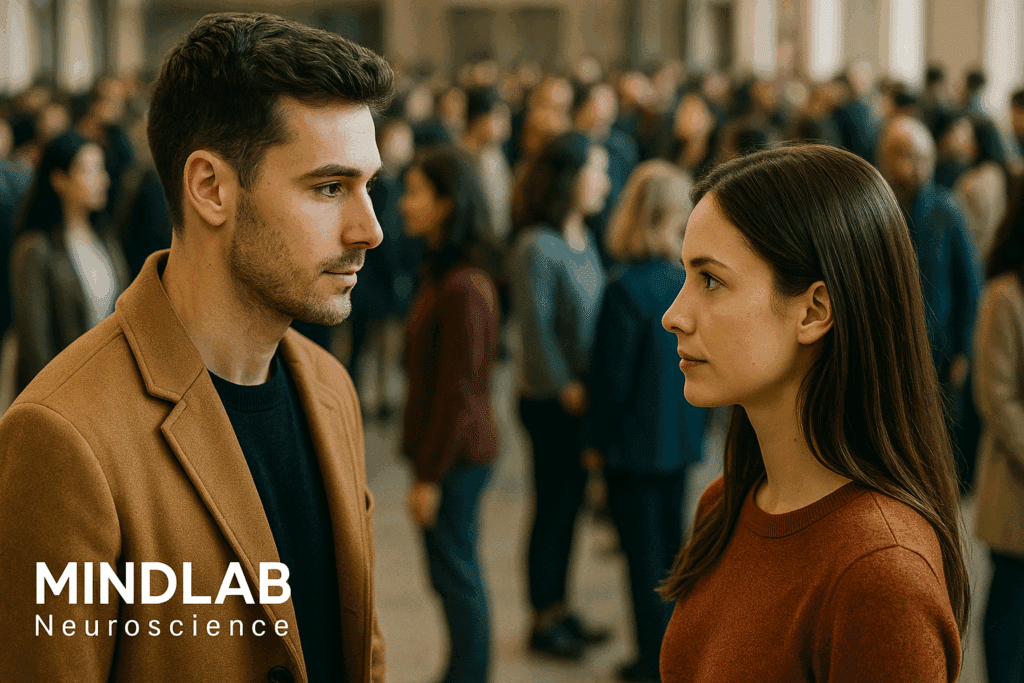
Applying Neuroscience to Navigate Modern Dating
Understanding the brain mechanisms underlying attraction does not diminish romantic magic—it enhances your capacity to make conscious, informed relationship choices rather than being blindly driven by neurochemical impulses. Recognizing that initial infatuation represents dopamine-fueled brain states rather than accurate assessments of long-term compatibility can help you maintain perspective during the early phases of a relationship, when emotions run highest.
This knowledge also helps explain why chemistry alone rarely predicts the success of a relationship. While powerful neurochemical responses feel compelling, they reveal more about brain compatibility than actual life compatibility. Sustainable partnerships require alignment across multiple dimensions—values, communication styles, conflict resolution approaches, life goals, attachment security, and emotional regulation capacities—factors that emerge over time rather than in initial encounters.
The neuroscience of sexual attraction also illuminates why relationships naturally evolve from passionate intensity toward calmer companionship. Rather than interpreting decreased dopamine-driven excitement as a sign of relationship failure, you can recognize this shift as a normal neurochemical progression toward oxytocin-mediated attachment. Mature love feels qualitatively different from early infatuation, not because something has gone wrong, but because your brain has successfully transitioned from attraction to bonding.
For those navigating dating challenges, neuroscience offers reassurance that attraction is highly individualized. The same person triggers vastly different neural responses in different individuals based on unique combinations of genetic factors, psychological history, attachment patterns, and situational context. Rather than viewing lack of chemistry as rejection or personal failing, you can understand it as simple neurobiological incompatibility—valuable information that helps both parties find better-suited partners elsewhere.
Your Brain Knows Before You Do
One of the most humbling insights from attraction neuroscience may be recognizing how much occurs beyond conscious awareness. Your brain evaluates genetic compatibility through scent, assesses developmental stability through facial symmetry, predicts behavioral synchrony through the activation of mirror neurons, and weighs numerous additional variables before conscious thought catches up. By the time you consciously notice feeling attracted to someone, your unconscious neural systems have already completed extensive processing and reached preliminary conclusions.
This unconscious evaluation explains why attraction often feels instantaneous and mysterious rather than deliberate and logical. You cannot rationally argue yourself into feeling chemistry with someone any more than you can consciously control your dopamine release or mirror neuron firing. The science of sexual attraction operates according to ancient biological imperatives shaped by hundreds of thousands of years of evolutionary pressure toward successful reproduction and offspring survival.
Yet this biological foundation does not eliminate agency or reduce humans to neurochemical automatons. While initial attraction arises from automatic brain responses, relationship development requires conscious choice, effort, and commitment. Understanding your neurobiology empowers you to work with rather than against your natural inclinations, making dating decisions that honor both emotional attraction and rational compatibility assessment. Your prefrontal cortex can evaluate what your limbic system proposes, ensuring that powerful chemistry aligns with genuine partnership potential before investing deeply in relationship development.
The intersection of neuroscience and romantic experience reveals that love represents neither pure biology nor transcendent mystery, but rather a magnificent integration of both. Your brain’s sophisticated attraction systems have evolved to guide the formation of partnerships while allowing for flexibility in individual variation, personal growth, and conscious relationship cultivation. By appreciating the neurological foundations of attraction, you gain valuable insight into one of humanity’s most profound and universal experiences while retaining the sense of wonder that makes romantic connections feel genuinely magical.
#neuroscience #sexualattraction #brainscience #dopamine #relationships #datingpsychology #compatibility #romanticattraction #oxytocin #partnerselection #evolutionarypsychology #attachmenttheory #brainhealthcoach #neuropsychology #mindfulness

